Food and Drink: Did You Know?
Rice to NoodlesThe use of noodles in Thai cuisine got a big boost due to World War II. A rice shortage stemming from the war and flooding resulted in rice being made into noodles, as turning the grain into noodles made the yield go twice as far. ▶ |
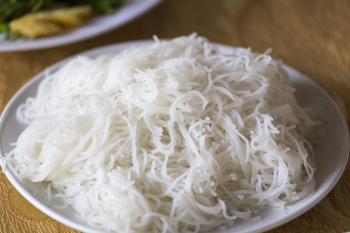 |
Five Flavor BalanceA fundamental aspect of Thai cooking is the balance of five flavors: sweet, sour, salty, bitter, and spicy. A well-crafted Thai dish usually includes at least two of these taste elements. ▶ |
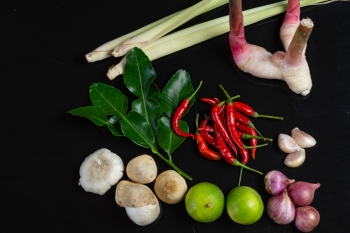 |
Crowning CondimentsThai restaurants include a condiment caddy at each table, allowing diners to customize particular flavors on their food. Called a khreuang puang, meaning "circle of spices", the caddy usually includes chili powder, fish sauce, sugar, and vinegar with sliced chilies. ▶ |
 |
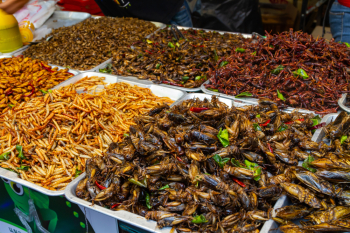 |
Crunchy Toppers◀ An assortment of insects qualify as ingredients in Thai food. The most popular are silkworms, grasshoppers, bamboo worms, water beetles, and crickets. Many are deep fried and salted before eaten. |
Street Food RulesBangkok is often considered the street food capital of the world. The city's vendors offer an array of dishes, with popular options including stir-fried noodles, grilled chicken or pork skewers, fried rice, papaya salad, and steamed chicken on rice. Street food is such a popular and ubiquitous part of local culture that many Thais don't even have their own kitchens. ▶ |
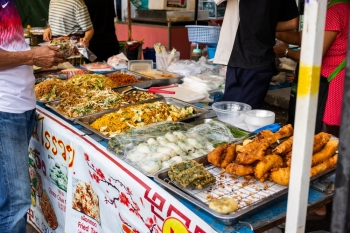 |
Colorful CurriesAn important part of Thai cuisine are curries, which refers to both the dish as well as the curry paste used to make it. There are three main types of Thai curries—red, yellow, and green—which are categorized by the color of the curry paste. The color of the chilies and other ingredients gives each curry its distinct hue. ▶ |
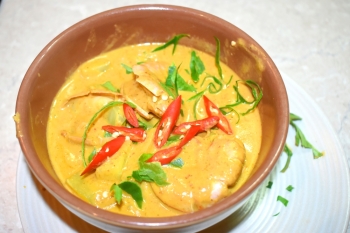 |
Pad ThaiThe popular dish pad Thai was promoted by the Thai government in 1938 as part of a campaign to reduce rice consumption. World War II and flooding affected the rice supply, and the populace was encouraged to eat noodles instead. Pad Thai—noodles stir-fried with Thai spices and including peanuts, tamarind, and palm sugar—was created to promote these aims and also to serve as a national dish to bring the country together. ▶ |
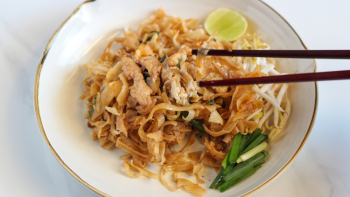 |
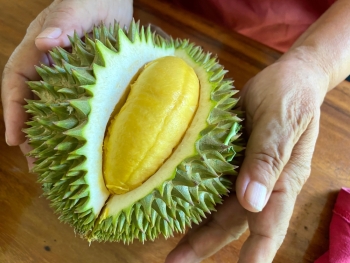 |
Down With Durian◀ Known as the "king of fruits," durian is loved and loathed in equal measures. This is due in part to its sulfur smell when fresh, though cooking dispels the scent, with the flavor cited as sweet with a creamy texture. It’s popular in Thailand and can be found in many forms, from fresh slices to fried and used in durian sticky rice. |
Floral Rice is NiceDuring Songkran, the Thai New Year, it’s common to enjoy a special dish called khao chae. It consists of washed and cooked rice that is then submerged in ice water perfumed with flowers. These range from jasmine and ylang ylang to damask roses and bread flowers. The dish is a refreshing and cool treat during the country's hot season. ▶ |
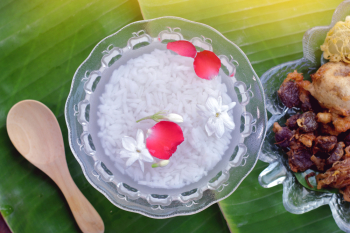 |
Thai BasilThai basil is a unique herb that’s indigenous to Southeast Asia. Distinct from the basil used in Mediterranean dishes, Thai basil has a spicy flavor with notes of aniseed and licorice. Thai basil can also withstand higher cooking temperatures than sweet basil. ▶ |
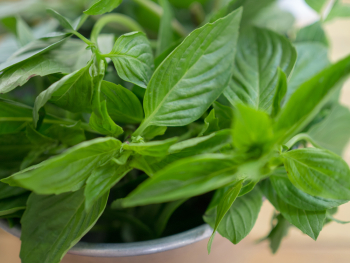 |
Essential SauceFish sauce, known as nam pla in Thai, is a vital ingredient in many Thai dishes. It adds a salty flavor and is used as a marinade for fish and meat or as a condiment with added lime juice and chilies. The smell may seem overpowering to aspiring Thai chefs, though adding a fresh squeeze of lime juice will tame the scent. ▶ |
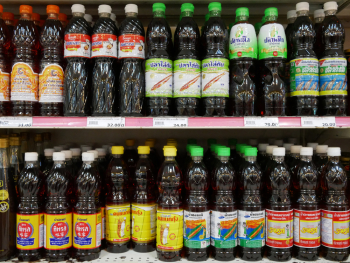 |
 |
Sweet on Rice◀ Rice is not just a staple for savory meals but is also used in many traditional Thai desserts, often combined with coconut and fruit. Popular Thai rice desserts include mango sticky rice and Thai rice pudding, the latter sometimes served with coconut sauce. |
No Chopsticks HereThai food is eaten with a fork and a spoon, not chopsticks, stemming from a practice brought to the country by King Rama V. Also known as King Chulalongkorn, he had taken a trip through Europe in the 19th century and liked using forks and spoons to eat but not knives, as Thai food was generally made into bite-sized pieces. His example caught on by the early 20th century, with people around the country forgoing eating with the hands, which was traditional, and imitating the new “royal” style of eating. Spoons in particular work well with the country's many rice dishes. ▶ |
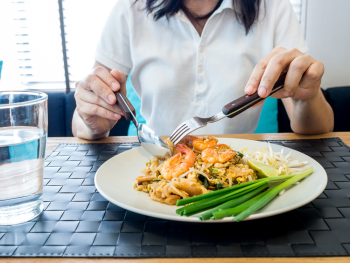 |
Types of RiceThailand has more than 20,000 varieties of rice, but only a few are commonly consumed and sold in markets. This results in Thai farmers only growing a few different varieties of rice. Different types of rice have various uses and qualities, such as texture and flavor, with some types better suited for different meals. ▶ |
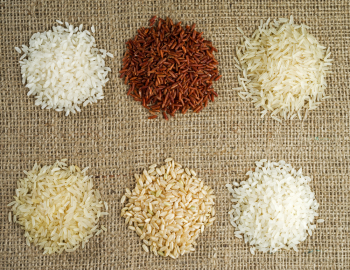 |
Full FlavoredTraditional Thai cooking calls for a range of fresh herbs, spices, and ingredients. The freshness of these components is crucial to Thai cuisine, as it brings out the vibrant and diverse flavors that Thai food is known for. Among the popular ingredients that lend Thai food its distinctive flavors are cilantro, mint, Thai basil, lemongrass, lime, and ginger. ▶ |
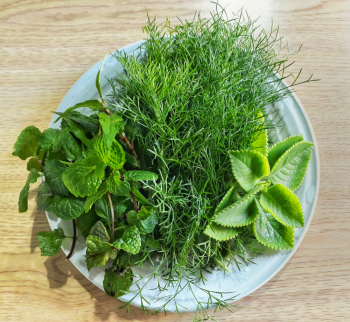 |
Copyright © 1993—2025 World Trade Press. All rights reserved.

 Thailand
Thailand